BY STEPHEN DiLAURO | Disparate paths are still very much the ways of the art world, even in the “new normal.” There is the A-list path to art stardom through galleries such as Gagosian, Pace, David Zwirner, White Cube, et al. — galleries where a genuine sense of aesthetics co-exists quite well with big-bucks pricing.
There is the more accessible path where galleries like West Chelsea Contemporary exist and new rising art stars like London-based, Italian-born Sofia Cianciulli can be exhibited, alongside masters like Alex Katz, Keith Haring and Ai Weiwei, and where works are priced to sell.
The vanity galleries, where artists pay to have their work displayed, are going strong.
Then there are pop-up gallery experiences. I recently visited two quite different pop-ups — “Free Anna Delvey” and “Goya Experience: Graffiti Dance Party.” The biggest realization that came to me was that the “new normal” is not just about the post-pandemic era. It’s also a celebration of the end of cannabis prohibition.
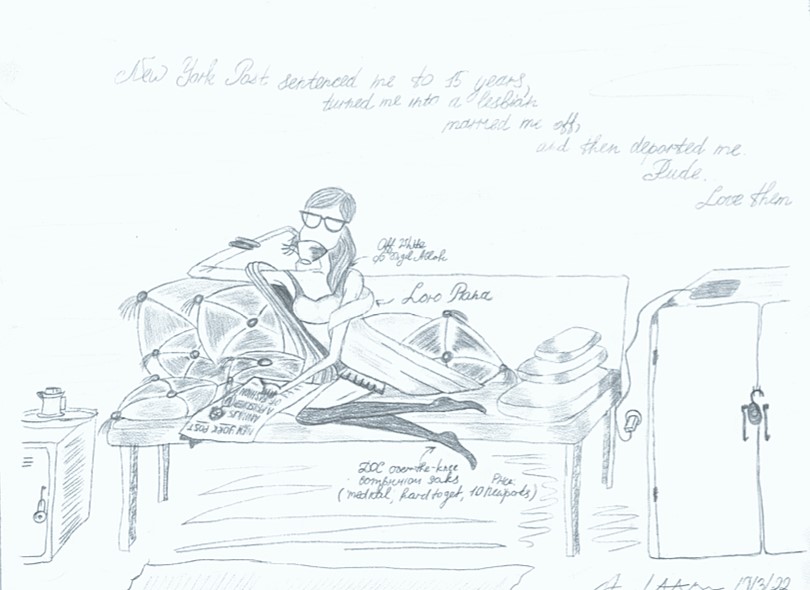
At these two quite different events, I saw a wide variety of art, controlled chaos, music and fun. There was also unexpected danger.
It’s difficult to write about art in New York City without mentioning money. That was clear when I visited a pop-up art exhibit titled “Free Anna Delvey.” The show is co-curated by Alfredo Martinez, the notorious, convicted forger of Basquiat paintings, and Julia “Jelly” Morri$on, who spells her name with a dollar sign. $he is the Downtown art and culture provocateur and one of the brightest creators on the horizon, as she expands into filmmaking.
Morrison was stabbed in the arm with a hypodermic needle by someone during the thronged exhibition.
“I didn’t feel it and I have no idea who did it,” she told me. She thinks it might be the same person who ripped the description of her piece “Nothing To See Here: White House Toilet” off the wall. The piece is a porcelain commode overflowing with shredded documents. Trump meets “R. Mutt.” And someone in the art scene was offended?
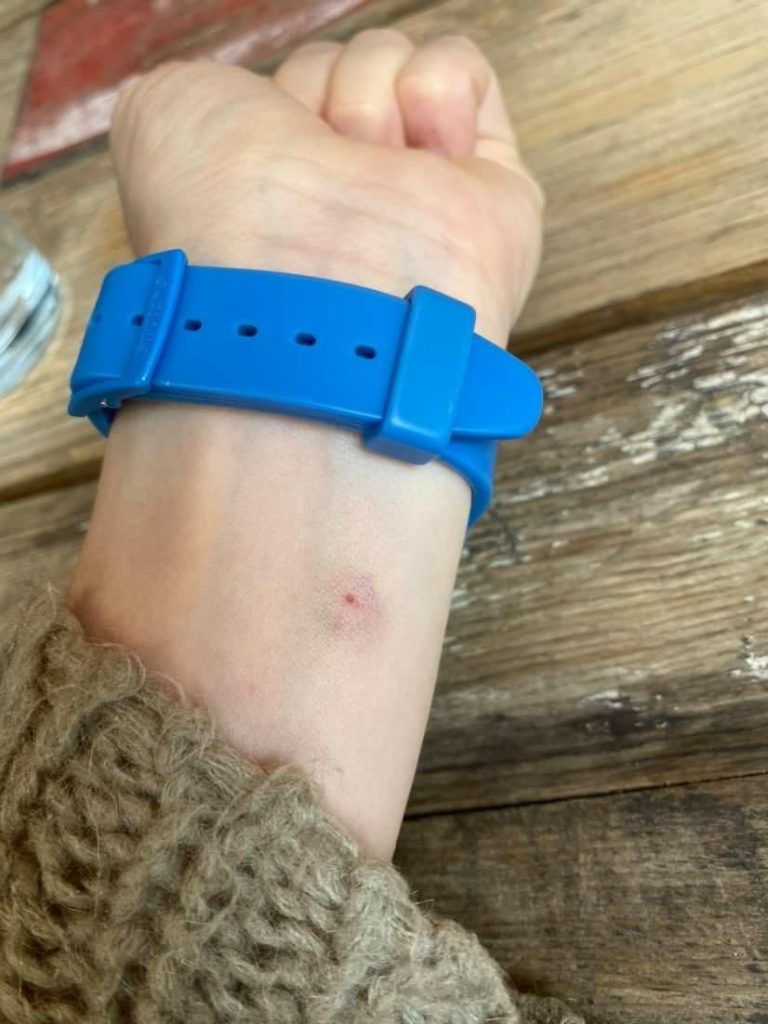
“Free Anna Delvey” was, ostensibly, an exhibition to benefit the Russian-born, fake German heiress who is the subject of the captivating Netflix dramatic series “Inventing Anna.” I found this event to be an example of good old-fashioned chutzpah on the part of the organizers and artists. I’m not certain how much or what benefit there was to the incarcerated Delvey/Sorokin; though she did get to sit through a phone call on speaker during which a woman kept screaming, “Everybody shut the f— up,” and “These calls cost like a thousand dollars a minute. Stop f—ing talking.”
Eventually, the crowd cheered the jailed young woman. The artist Chelsea Love called out, “Marry me, Anna. Then you can get an American passport.”
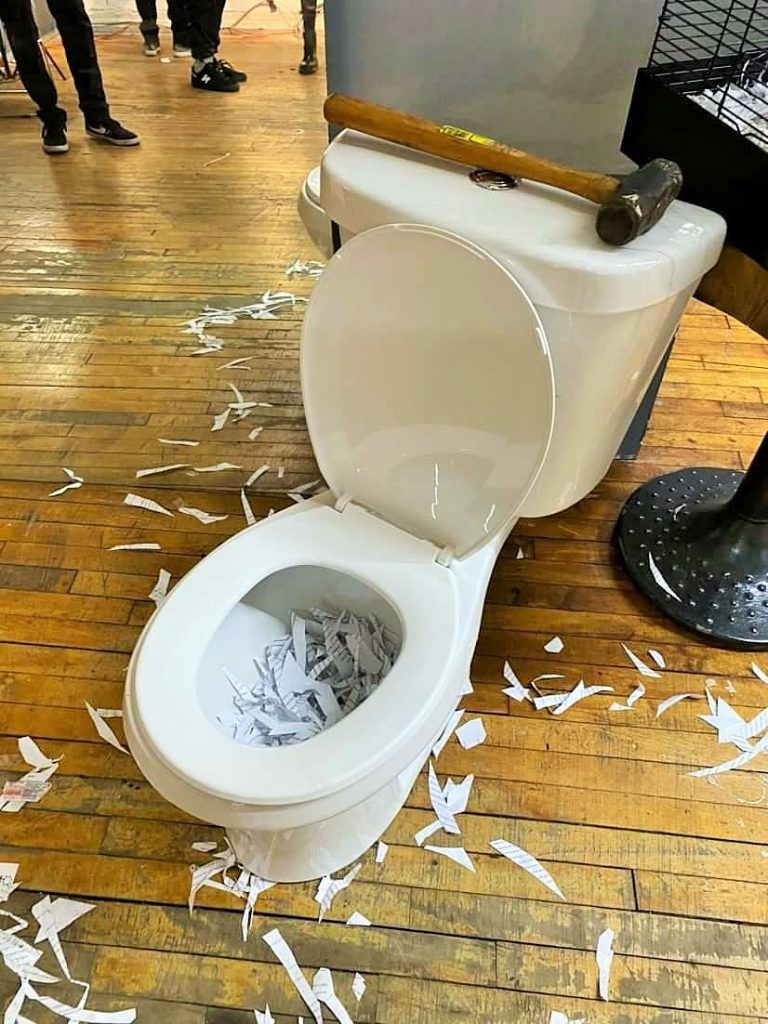
If you’re unaware, Anna Delvey is the name chosen by the grifter Anna Sorokin, who was convicted of bilking Downtown hotels and others out of some $275,000. As the Netflix series and the reportage on which it was based make clear, there likely was lots more in personal loans and bills run up on others’ credit cards. Anna Sorokin is currently being detained for overstaying her visa.
As described by Herman Melville in his satirical 1857 novel, “The Confidence Man: His Masquerade,” con artists rely on embarrassment preventing their marks from speaking out or going to the authorities. In Melville’s day, greed dominated American culture as much as it does now. Con artists do not rely on their own confidence so much as working and eventually undermining the confidence others have in themselves.
Netflix is binging on grifters. The streaming service released two other limited series regarding contemporary con artists: “The Tinder Swindler” and “Bad Vegan.” This last series elevates gullibility and victimhood in such a way that I could only watch one and a half episodes. The characters are just so damned unsympathetic.
“The Tinder Swindler,” an Israeli con man, and Anna Sorokin/Delvey were both brought down by “victims” who themselves committed bank and credit card fraud and cooperated with the authorities after funneling illicitly gained funds to the respective grifters.
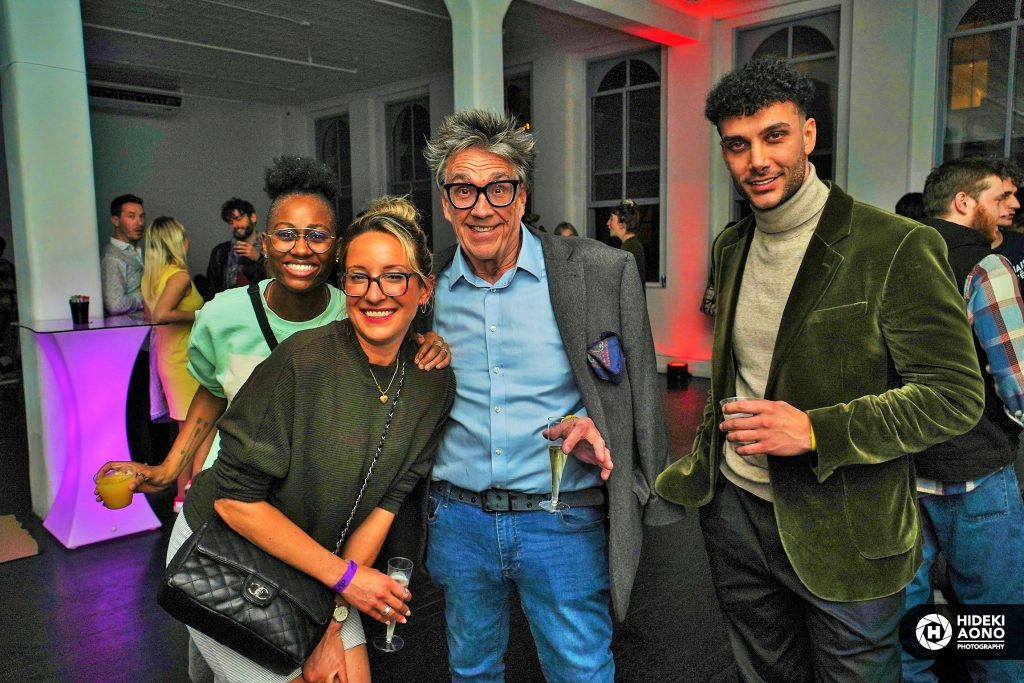
Delvey/Sorokin was imprisoned for almost four years on the fraud charges. Then, upon her release for good behavior, she was taken into custody by U.S. Immigration and Customs Enforcement (ICE). Her biggest mistake was going after $40 million from patriarchal bankers and capitalists. She didn’t get it and never even got close, but she embarrassed the wrong people. She is still locked up.
Delvey/Sorokin reportedly is appealing her deportation for overstaying her visa while, at the same time, applying for a special artist visa, which seems a real stretch. She’d do better accepting Chelsea Love’s marriage proposal. The pieces at the show were copies of the originals created, at Sorokin/Delvey’s request, by the Basquiat forger Alfredo Martinez.
Martinez is an amiable guy. His comment to me on the event was the most realistic I heard: “I think people are just happy to get out after the last two years.” That and the free beer and wine didn’t hurt. Also, the music of the young all-women band Homade was an excellent element of the evening.
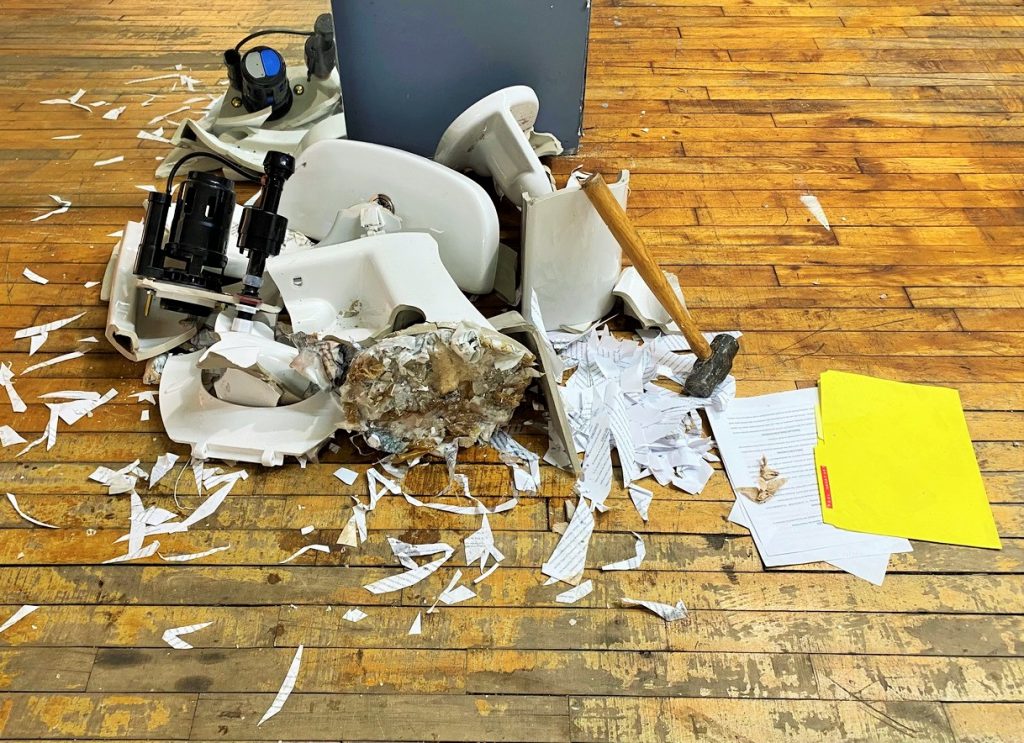
There was a fervent desperation to get the reflected glow from any kind of celebrity clearly at work at the “Free Anna Delvey” pop-up. There was more than one female con artist look-alike at the event. In today’s America the Tawdry, it apparently doesn’t matter whether you’re famous or infamous, as long as the lighting, makeup and camera angles are favorable. Kind of like the Oscar Wilde aphorism “It doesn’t matter what people say, as long as they’re talking about me.”
Artist, jazz musician and publisher of Whitehot Magazine, Noah Becker was at the pop-up on Delancey Street at the foot of the Williamsburg Bridge. Becker had one of his paintings hanging. I always enjoy looking at his work, whether online or in person. The painting on exhibit portrayed classical sculptures with graffiti spray-painted on them. Becker’s painting was one of the largest pieces there. His work shows an inherent awareness of beauty, aesthetics and, in this painting, displays a quizzical irony.
If I was offering odds, they would favor Noah Becker being someone on the Downtown scene who rises to A-List art world status. I wasn’t surprised to see him there. He has a Warhol-like fascination with popularity. He had Anna Delvey/Sorokin as a guest on his “Art World” podcast the week before the pop-up exhibition. It’s worth a listen. She almost had me convinced with her virtue-signaling humility.
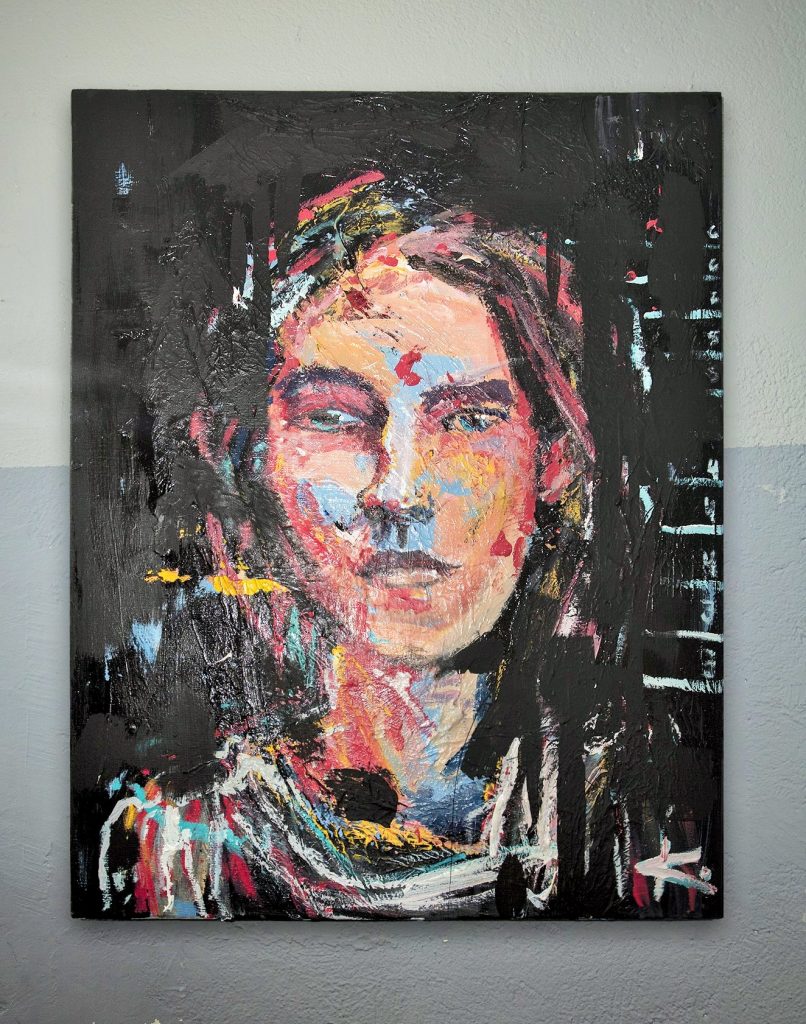
I asked Keli Lucas, a burgeoning Downtown art scene personality, if she believed Sorokin/Delvey was real about wanting to start Anna Delvey Foundation (ADF) as the most exclusive club in the city, and how that would benefit the artists in the room, none of whom, I posited, would even be allowed in the door.
Lucas’s answer was a bit jejune but showed her good-heartedness (which grifters count on): “The exclusivity of her club just makes me think of her as a business-minded individual. Knowing that members of the club would have to pay a large fee to continue their access creates the value of it, and speaks to what type of people will be in the room…as long as the artists who provide the artwork that would have been shown in the space were allowed in. That makes sense to me. I definitely think they’d be paid to host tables and events there, though.”
I suspect that the artists who would have been invited to Delvey’s illusory exclusive club would have been drawn from the A-list: Jeff Koons, Julian Schnabel, Marina Abramovic, Damien Hirst and so on. O.K., so-called artist Hunter Biden likely would have been invited, too. But the chimerical ADF never came about and if the Democrats lose the majority in the House of Representatives in November, Hunter Biden will be investigated for his grifter-like behavior, in and out of the art world, and justifiably so. (Full disclosure: I voted for Howie Hawkins, the Green Party candidate for president in 2020. I find both parties of the duopoly ignoble and irremediably dishonest, at best.)
What’s my take on Anna Delvey’s artwork, as recreated by Alfredo Martinez? It’s cartooning and not particularly impressive. The caption of one says, “New York Post…turned me into a lesbian. …” As someone who identifies as a lesbian when opportunity and inclination coincide, I wasn’t sure if she was trying to be funny or if she was playing the blame game that con artists fall back on when caught. I congratulate her for the transition, if it’s real. It must have served her well in jail. However, nobody made Anna Sorokin do anything.
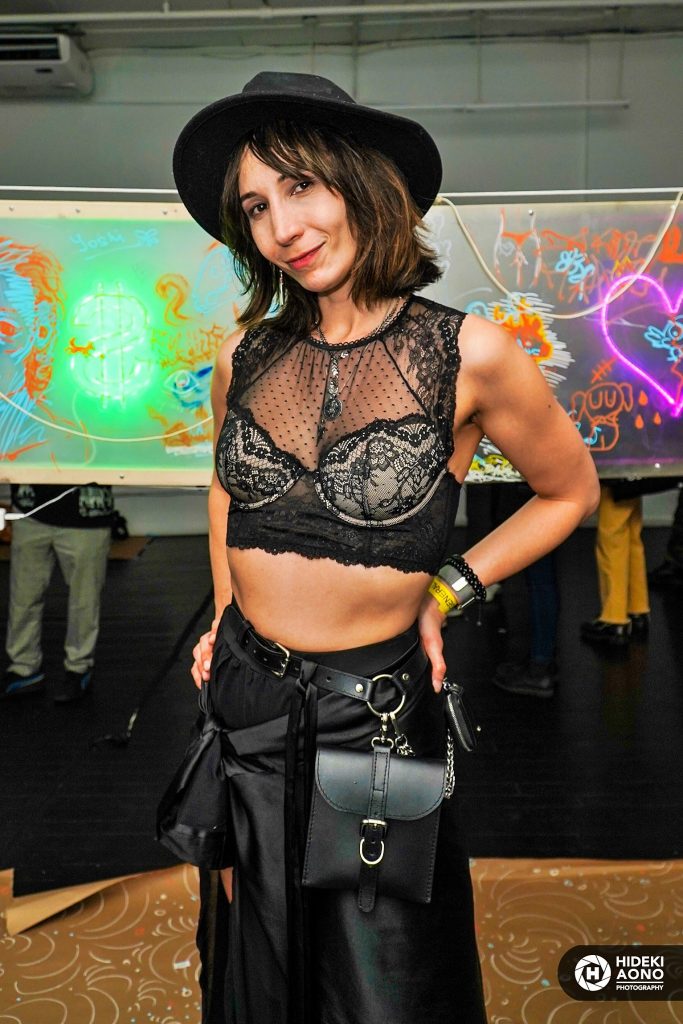
Most artists I’ve known over the decades, and they are many, have goals that don’t line up. They focus on getting rich people to buy their work and take it out of public view, while at the same time trying to create a public regard that identifies artists as possessed of some sort of superior spirit.
Artists are opportunists. They have to be to survive, or even better, thrive. There’s nothing wrong with money, for sure. I love having and spending it as much as anybody else.
It’s the part about being somehow deserving of society’s acclaim regardless of one’s aesthetic vision or level of mastery that’s a bit troublesome. (O.K., “mastery” is a patriarchal word. But you know what I mean.)
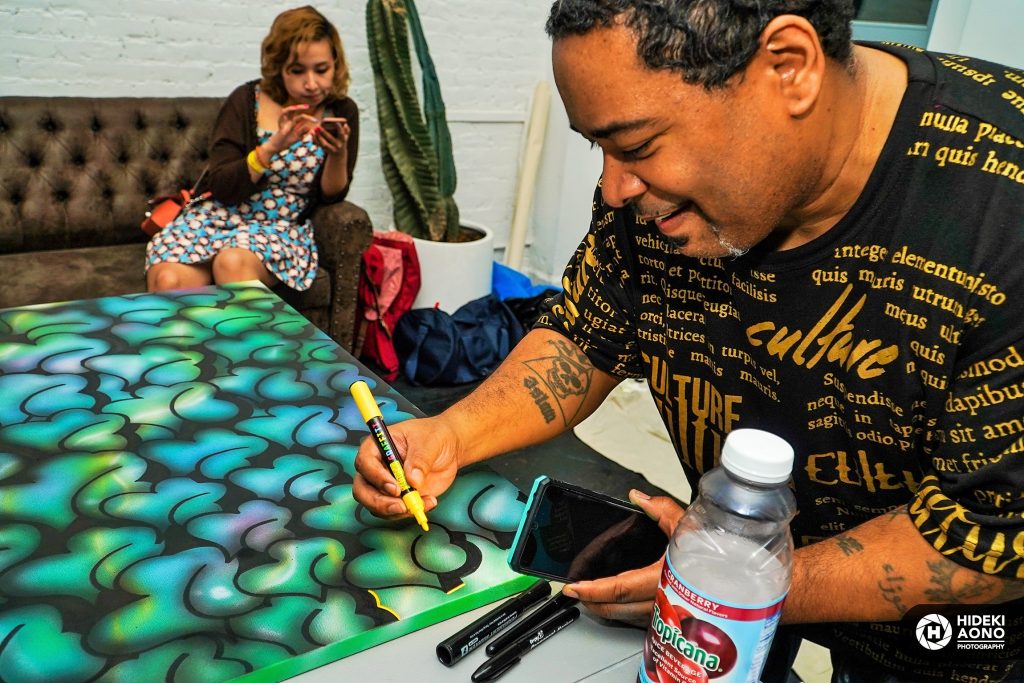
As I left the “Free Anna Delvey” event, Chelsea Love and I struck up a conversation on the sidewalk outside. She invited me to another pop-up two nights later, in Tribeca.
“Goya Experience” is exactly the type of organization that one would have expected Anna Delvey to have built on her way to establishing a $40 million exclusive social club. Isabel Valencia Zuniga, the charming young founder of “Goya Experience,” is a painter who also studied hospitality. She has a wealth of experience in running clubs and hotel management, as well as an artistic spirit.
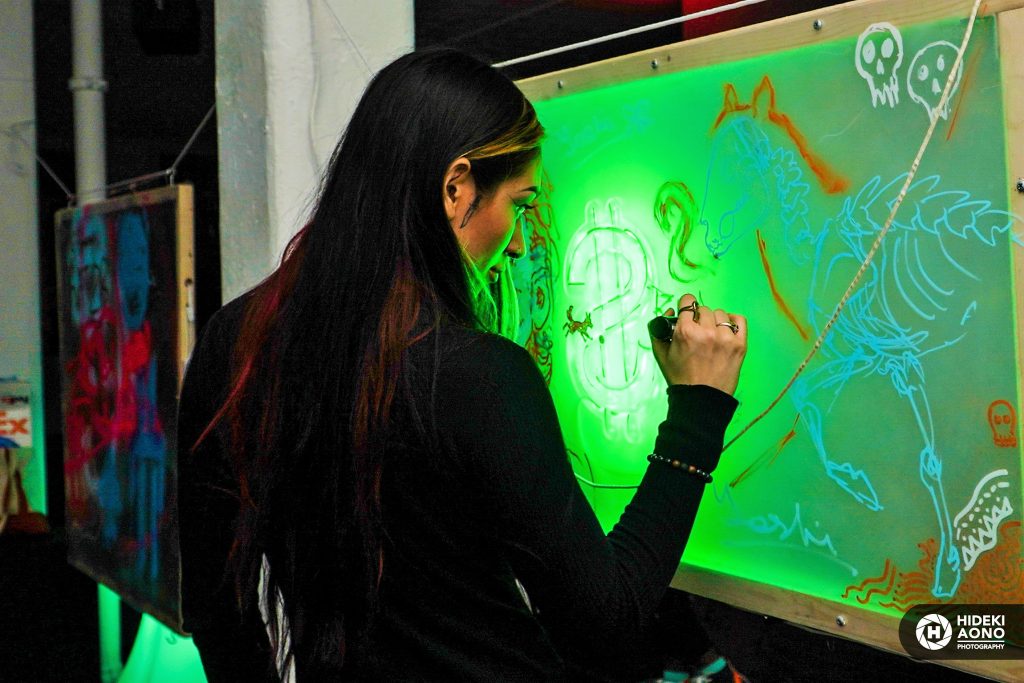
Her pop-up “Goya Experience: Graffiti Dance Party” was outstanding and everything “Free Anna Delvey” was not. There was the pitch-perfect soundscape by international DJ Kiwi. She and I got into a conversation about Ibiza and how it’s changed.
That got me to thinking about my old pal Clifford Irving and the book “Fake” he wrote about the art forger Elmyr De Hory, many of whose “masterpieces” still hang in museums around the world, credited to some of history’s great artists. Cliff was a fine novelist. I’ve read his “Tom Mix and Pancho Villa” more than once. Unfortunately, Cliff is primarily remembered for faking an as-told-to autobiography of the billionaire recluse Howard Hughes.
Orson Welles made his documentary “F for Fake” when I was living on Ibiza in the town of Santa Eulalia del Rio. At the time the subjects of the film — De Hory and Irving — were living there, too. Society does seem to love a good con, at least on film or video.
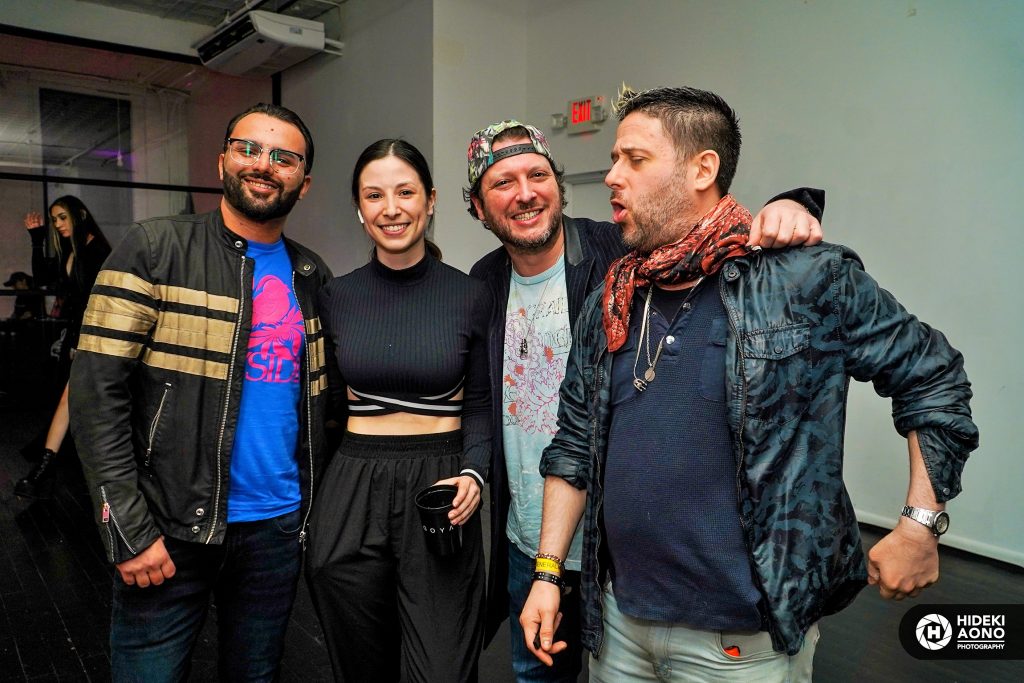
In addition to the music, the THC-infused super-tasty catering by White Rabbit Industries helped the evening along immensely. There were stations where guests could try their hands at creating their own graffiti all through the huge Tribeca loft Isabel Valencia Zuniga and her partners chose for the evening. Drinks were also included in the very reasonable ticket price.
There were young artists with mini-exhibits of their work. While talking to guests, the artists were creating new works. I struck up a conversation with Kida Nefer, a young North African woman whose cartoon-character paintings and enthusiasm so impressed me that we may collaborate on an animated short, sooner than later. I already sent her the script. (Side note: Chelsea Love never showed up that night.)
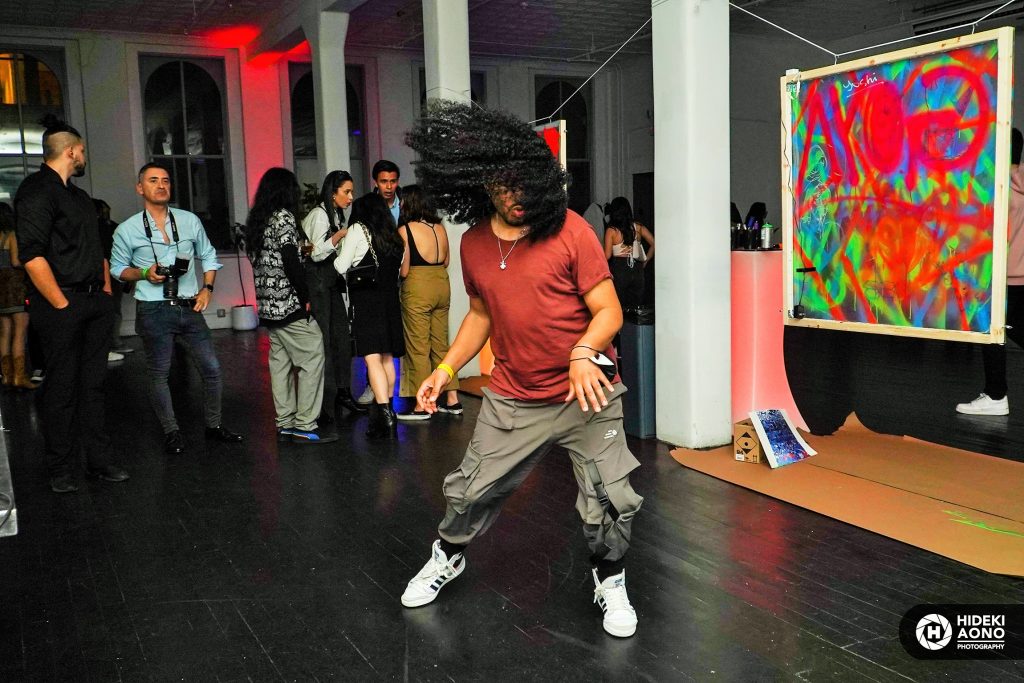
The young server of the delightful THC hors d’oeuvres and snacks warned me at one point that I was approaching 150 milligrams and I asked her to cut me off. I settled on a sofa for some people-watching and stoned musings.
I watched the evolution of one young woman in a nice dress, who started out moving from one graffiti station to the next to view the results of others’ efforts. After a while, I noticed that she started dancing by herself. She, like everyone there, was well-put-together. Eventually, she ended up sitting on the floor with her back against the wall and her long legs stretched out, quite zonked, and totally acceptable behavior.
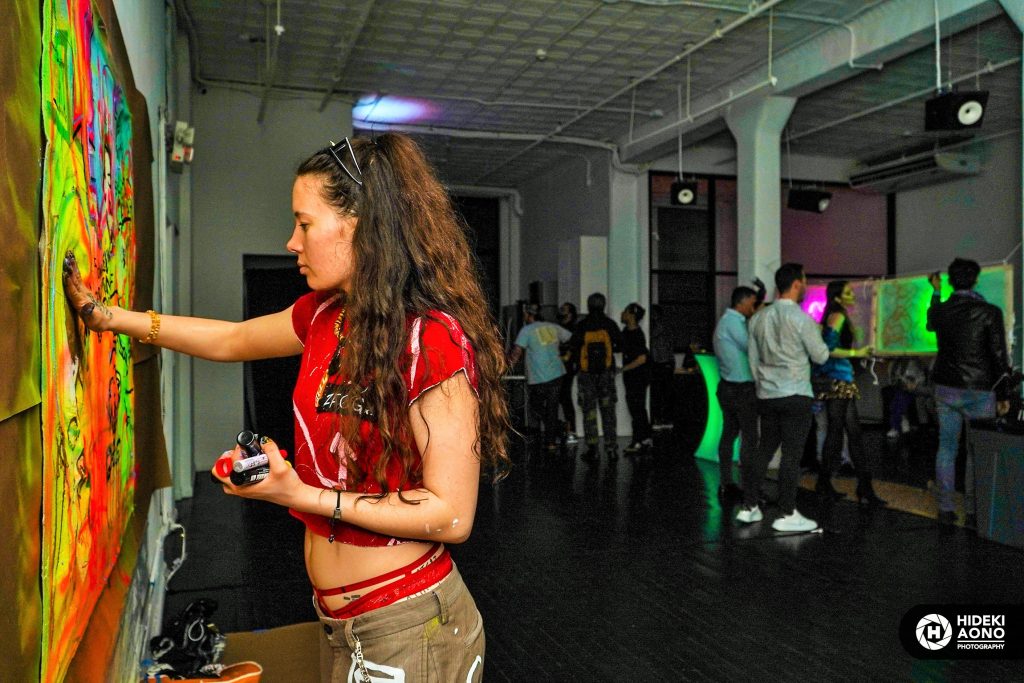
It was then that I realized the big difference between the two pop-ups: “Free Anna Delvey” was a gathering of a Downtown herd. It was crowded with lots of milling around, not a lot of genuine interaction, and the beer ran out early.
“Goya Experience” was an opportunity for individuals to interact. I met several people who work in finance and love collecting and being around art. People could talk to each other at civilized decibel levels. Some of the art created that night was sold.
O.K., “Free Anna Delvey” was a free, happening art opening that was not much different than group shows of the past. Honestly? Meh.
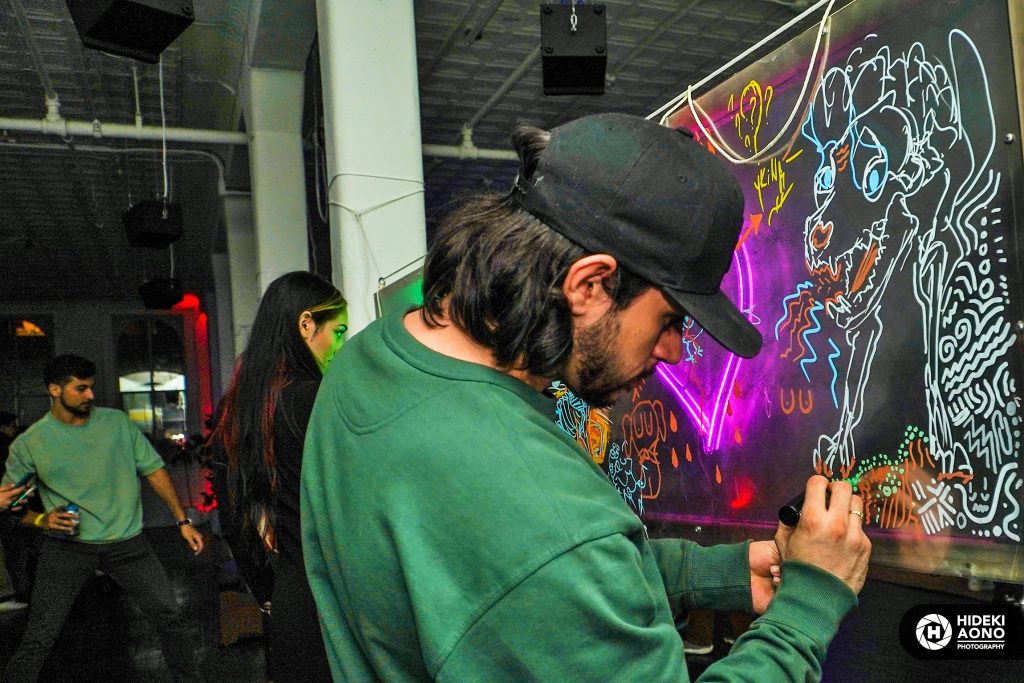
“The Goya Experience” cost a few bucks to attend, and it felt exclusive, sociable and comfortable. I loved it and look forward to more from these event creators. They really know how to throw a party.
The poet Carl Sandberg once said, “Exclusive is the ugliest word in the English language.” I have to disagree. Greed is much uglier.
The one thing both events did share was the presence of good music. No one can ever be faulted for that.
There was a meme on Instagram today. (Instagram is the medium by which everyone new who I met during these outings exchanged their contact info with me.) The meme says: “Fake has become so acceptable that people get offended when you keep it real.”
It’s not my culture. I just live here.
DiLauro is a playwright, critic and musician. His award-winning public radio storytelling and music series “River Tales” is now streaming everywhere.

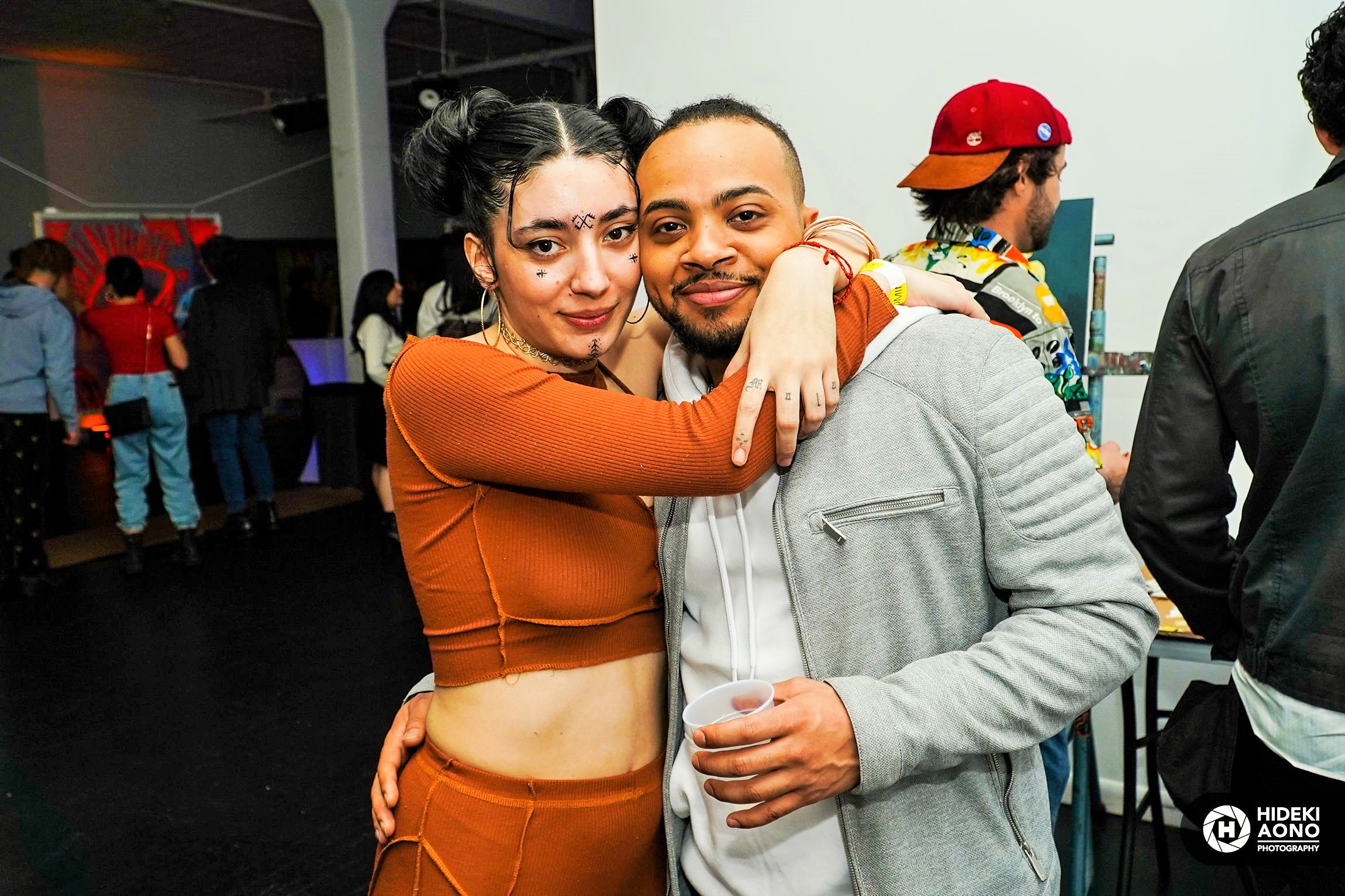
I was at Goya and agree about everything Mr. DiLauro experienced. The pop-up felt exclusive and unpretentious, the artists were approachable and their work unique. I made friends from completely different walks of life.
I cannot wait to see what Ms. Valencia Zuniga’s cooking up next!